Winning Back Lost Customers: 5 Tips for Success
When all it takes is a username and password, customers can start engaging with your digital product, app or service faster than ever. Starting a subscription or placing an order online takes only a few seconds.
But the speed and ease with which they can become your client means they can switch to a competitor or forget about your service just as quickly.
It may sound like a waste of time and money to focus on bringing back customers who have expressed disinterest in your company, but data from the Client WinBack Benchmark Study found that 26% of clients return with a win back campaign, and with double the lifetime value.
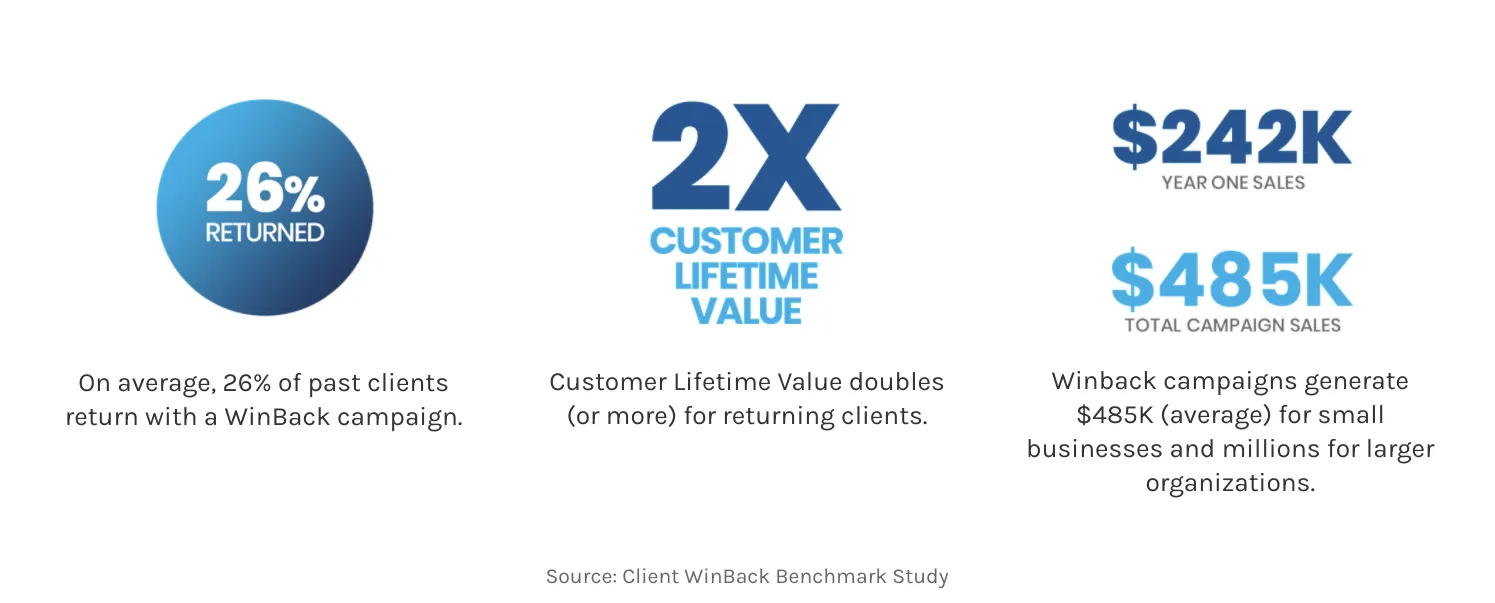
Even if customers have become inactive, you have a 60-70% chance of success to sell to them again, while the chances of success for selling to a new potential customer are only 5-20%. That means you could be 13 times more likely to sell a past customer than a new one - not to mention that it’s 5 times more cost-effective than going after a new customer.
A win back program re-engages lapsed customers by offering a reward if they do a specific action, such as re-activating a subscription or completing a new purchase.
This can be used to target old customers who haven’t made a purchase in a certain number of days or months, people who expressed interest but never bought, or even those who have explicitly cancelled their subscription:
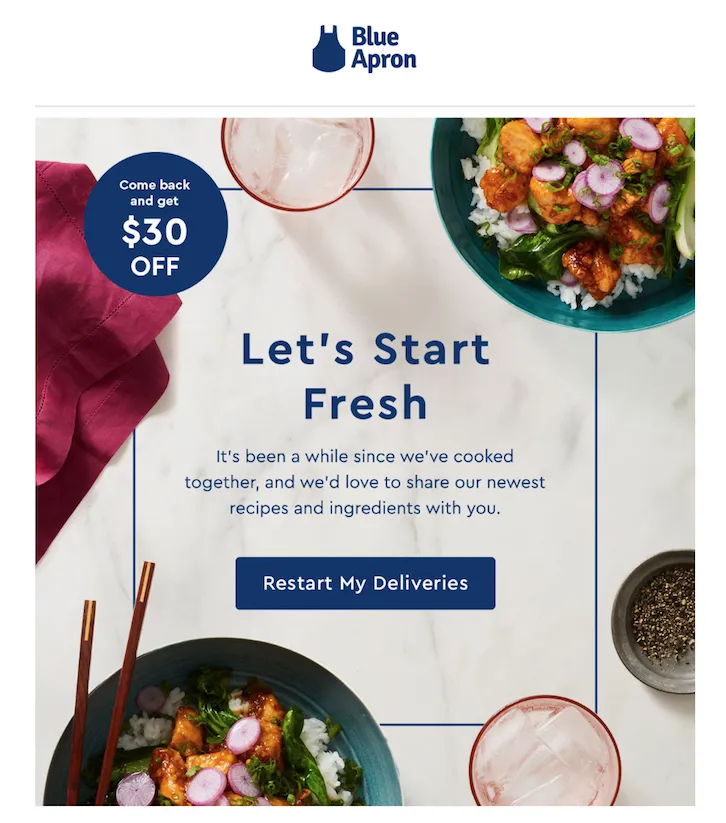
If it’s cheaper and easier to re-engage past customers, what have you got to lose?
Keep reading for five things you need to know about launching a successful win back program:
- Only focus on the “best” lost customers
- Your customers left for a reason, but not all for the same reason
- Your win back program can run itself
- Always be measuring success (and failures)
- Your winback strategy should complement your lifecycle marketing strategy
1. Only focus on the “best” lost customers
Your win back strategy shouldn’t aim to bring every single lapsed customer back to your website or app.
Just like with regular marketing efforts, some customers are better to target than others. If a customer doesn’t fit your ideal criteria, has a low lifetime value or offers a minimal contribution to your MRR, they’re probably better off somewhere else.
There’s no point in wasting money on customers who aren’t at all likely to stick around the second time.
What kind of customer is more likely to come back – and stay with you?
Data about past customer behavior will offer the best clues into who is more likely to return.
An article in the Journal of Marketing indicates that your most valuable former customers are those who:
- Have referred others to your brand
- Left for reasons surrounding price rather than service quality
- Had complaints that were satisfactorily resolved
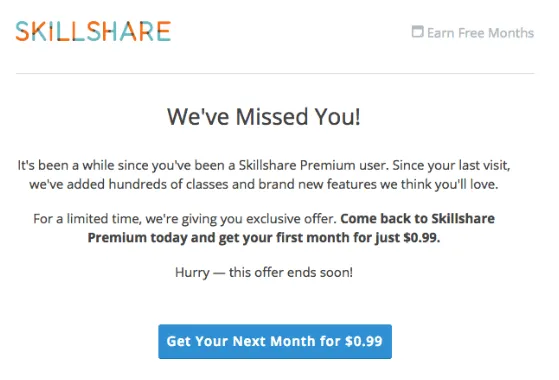
2. Your customers left for a reason, but not all for the same reason
While the objective of a win back program is to re-engage old customers, not all of them spent time away from your brand for the same reason.
Differences in motivation to leave call for differences in motivation to return, meaning offering all lapsed customers a 10% off coupon and hoping they’ll bite is merely wishful thinking.
A customer may cancel their subscription to your service or stop making purchases because of product limitations, price barriers, poor customer service, a lack of product understanding, or other reason.
To best tailor your win back strategy, start by answering these three questions:
What is the goal of your win back program? For example:
- More sales
- Adoption of a new product
- Awareness of a new feature
- Increased cash flow
What customer action will help you achieve this goal?
- Re-activating their subscription
- Placing a new order
- Logging back in to your portal
- Re-downloading your app
Why did your customers leave?
- Too expensive
- Bad experience
- Product hard to understand
- Forgot about your product
Our model below shows what kinds of rewards work best based on a customer’s reason for not continuing to buy:
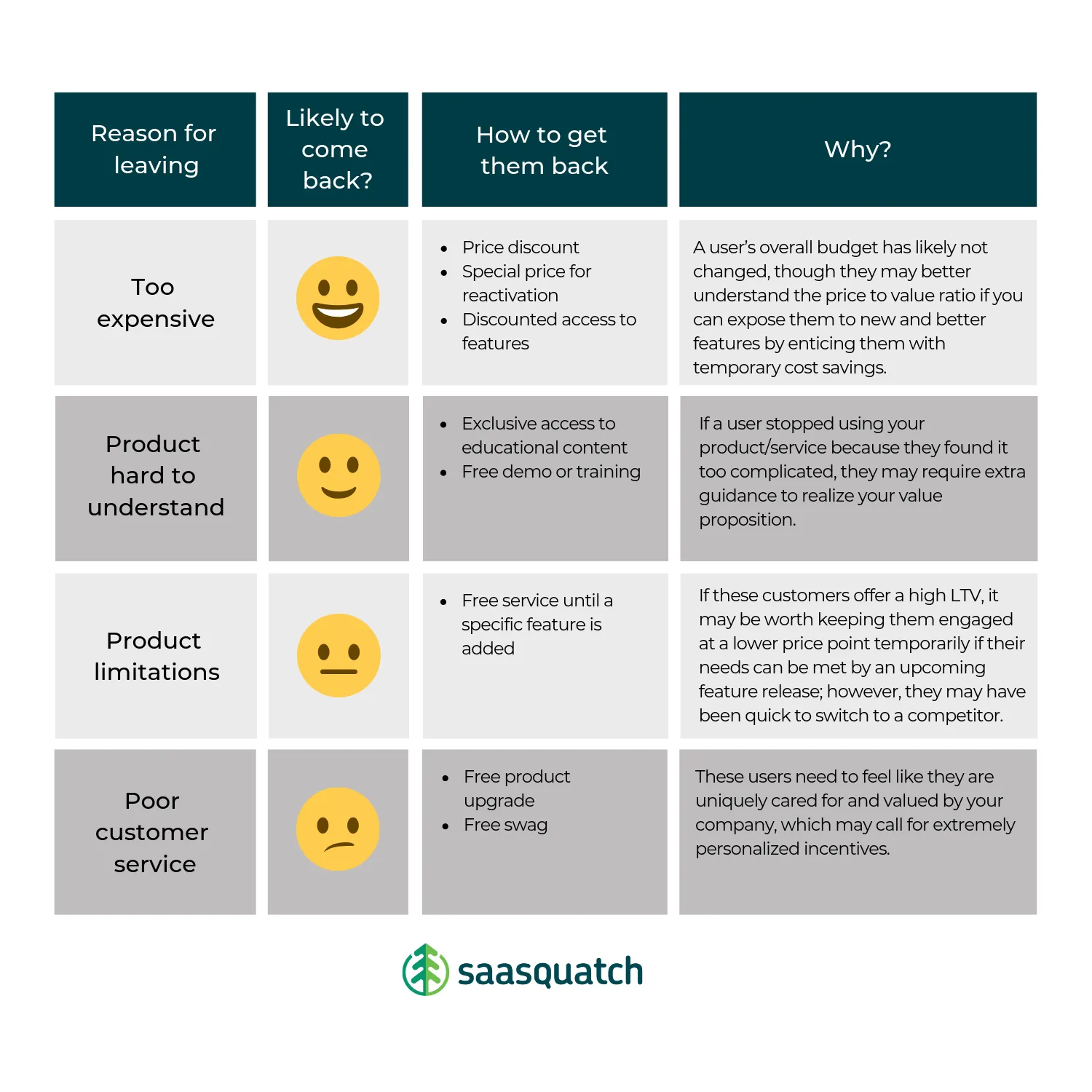 If you’re stuck on what to offer, data shows that when win back emails offered a dollar discount they consistently performed 2x better than emails that offered a percentage discount.
If you’re stuck on what to offer, data shows that when win back emails offered a dollar discount they consistently performed 2x better than emails that offered a percentage discount.
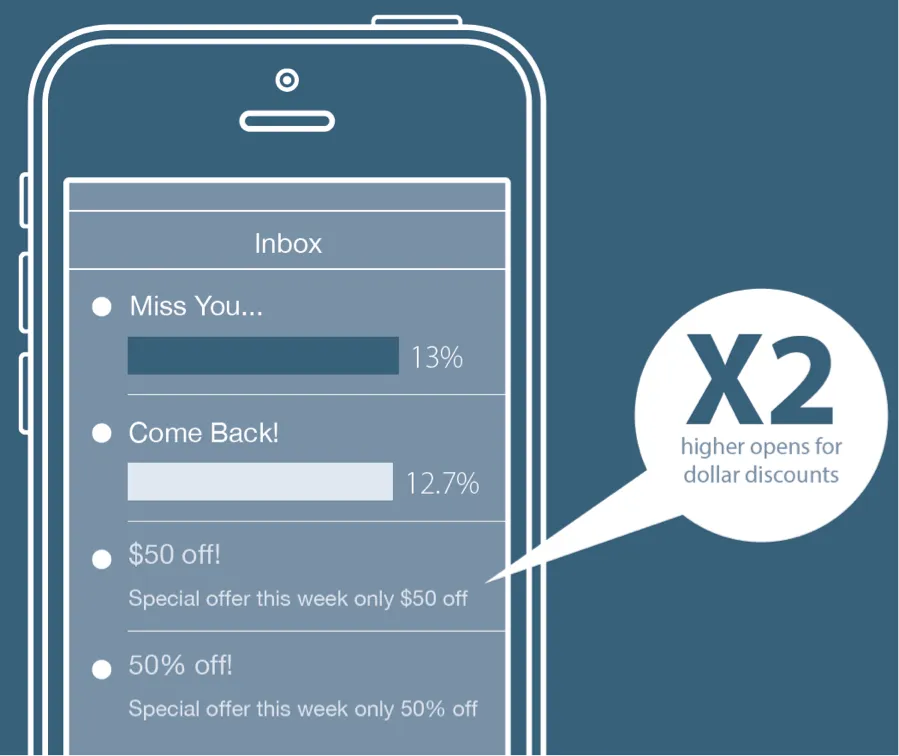
However, don’t be afraid to take your win back incentives beyond percentage or cash-based discounts! Send out an offer that can be redeemed for a specific product, a free consultation with a product expert, or even company swag.
Keep in mind that the reward you offer will influence a customer’s behavior once they come back. Discounts on a one-time purchase may not encourage someone to reactivate their subscription, while a discount on their next 5 purchases may help someone reform a strong repeat usage habit.
Check out this win back email from video game app Pokemon GO that incentivizes players to get back in the game and explore new features:
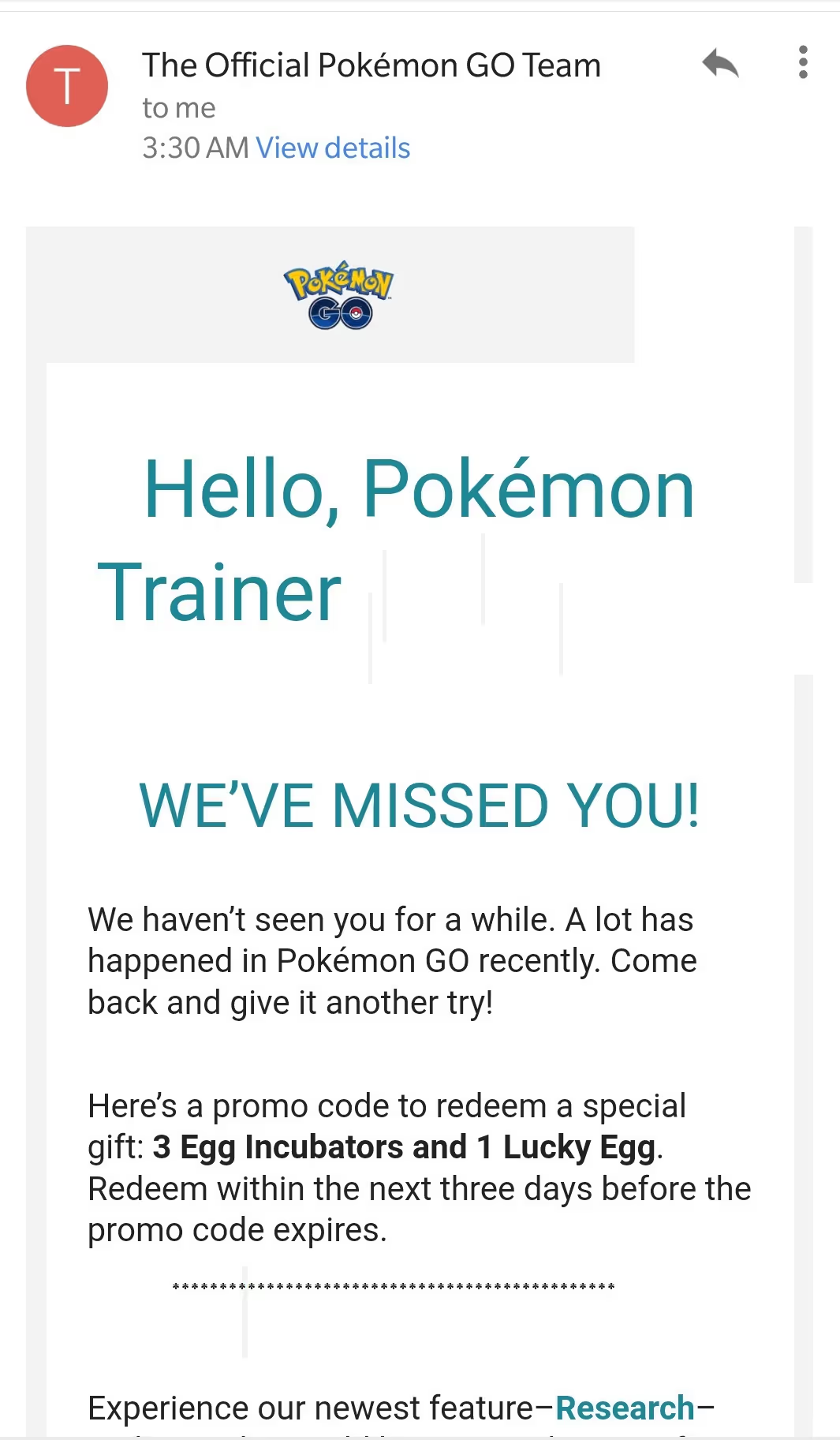
3. Your win back program can run itself
Your win back program’s rewards can be automatically sent out to the right customers at the right times when you leverage dedicated software, erasing the need for manual monitoring.
This means that you can:
- Set how long after a user’s last activity date you would like to automatically send a reward.
- Choose the win back reward type and value you would like to send.
- Customize the reward notification email sent to customers who have successfully earned a reward.
- Start winning back customers!
With a platform like SaaSquatch, the system constantly monitors your available customer data to determine whether or not the customer is eligible for the reward detailed in your win back program rules. If they meet the criteria, the customer is notified by email that the reward has been added to their account balance and is ready for use.
Making the reward immediately available to the user increases the likelihood that they will accept it, while you can add an expiry date to instill a sense of urgency.
4. Always be measuring success (and failures)
Tracking the results of your win back program helps ensure you’re putting your resources (both human and financial) to good use when offering and fulfilling rewards.
Look for a platform that lets you report on which customers were successfully won back because of your win back efforts, and how much they spent with you since their reactivation.
A key consideration is measuring how much of an impact a customer has on your revenue after they have been re-engaged, and what kind of lifetime value they now represent. A successful win back program is characterized by customers who are reactivated and remain active for a significant amount of time, as opposed to accepting the reward only to immediately go quiet again.
Try measuring your program’s success with a reactivation rate (%) to understand how well your win back strategy is bringing people back on board. This is similar to how you would use a percentage to track lead conversion.
Access to your program’s data also lets you continuously test and optimize your incentive strategy and experiment with variables like reward value, email copy, and timing to establish a formula with optimal conversion rates.
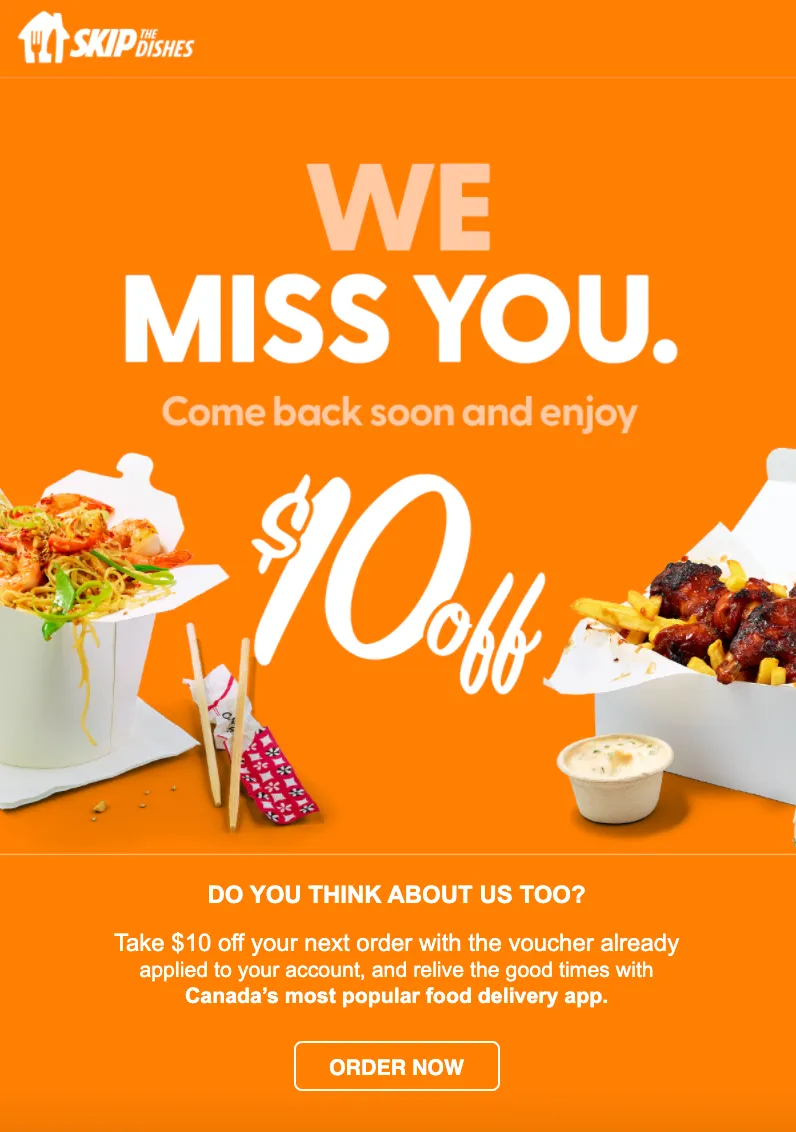
5. Your winback strategy should complement your lifecycle marketing strategy
Win back campaigns can be a powerful strategy for bringing back lost customers, but user engagement shouldn't start once the customer has already left!
We believe that win back campaigns are an important component of lifecycle marketing - a strategy that aims to keep customers engaged with content, offers, and incentives from the moment they learn about your brand.
But since it’s simply unrealistic to expect every single customer to stick around forever, reactivation campaigns like a win-back offer can supplement your lifecycle marketing when customers need a little extra nudge.
In contrast, a siloed win-back campaign presents the risk that customers will take advantage of your reactivation offers only to cancel or lapse again once they've used it up, leading to a negative ROI.
To learn more about a complete lifecycle approach, check out this article!